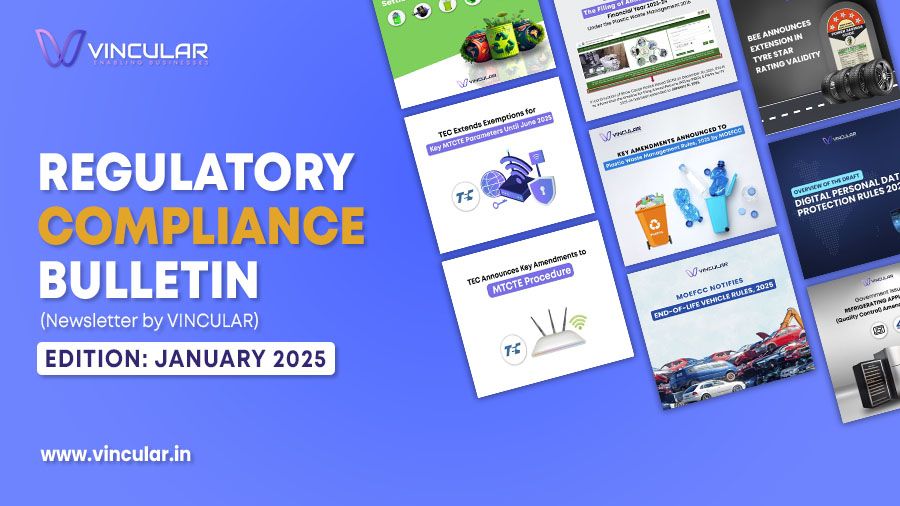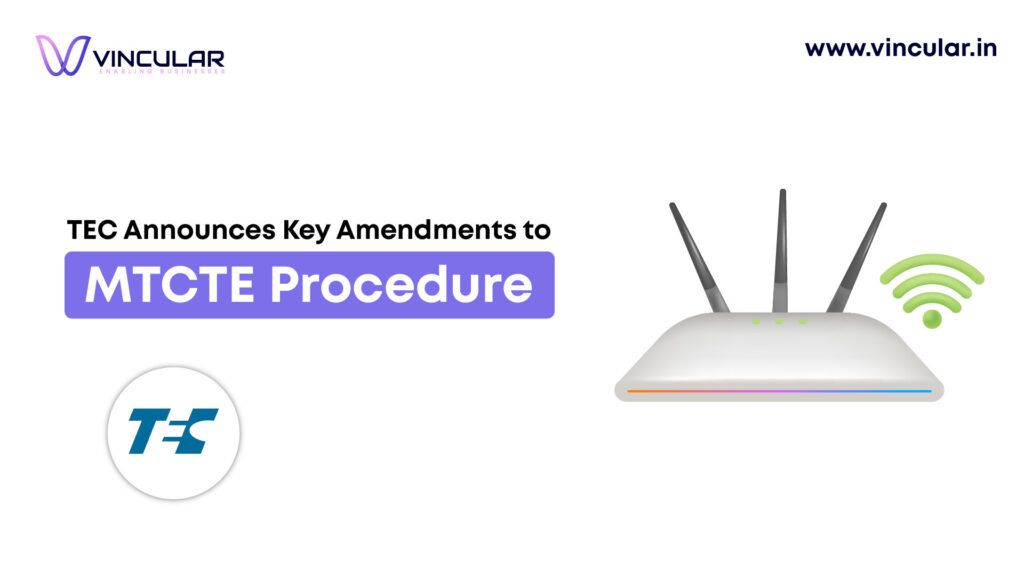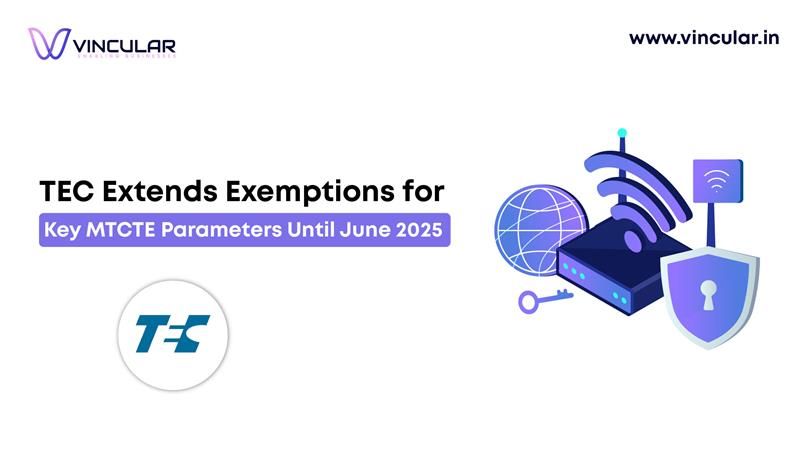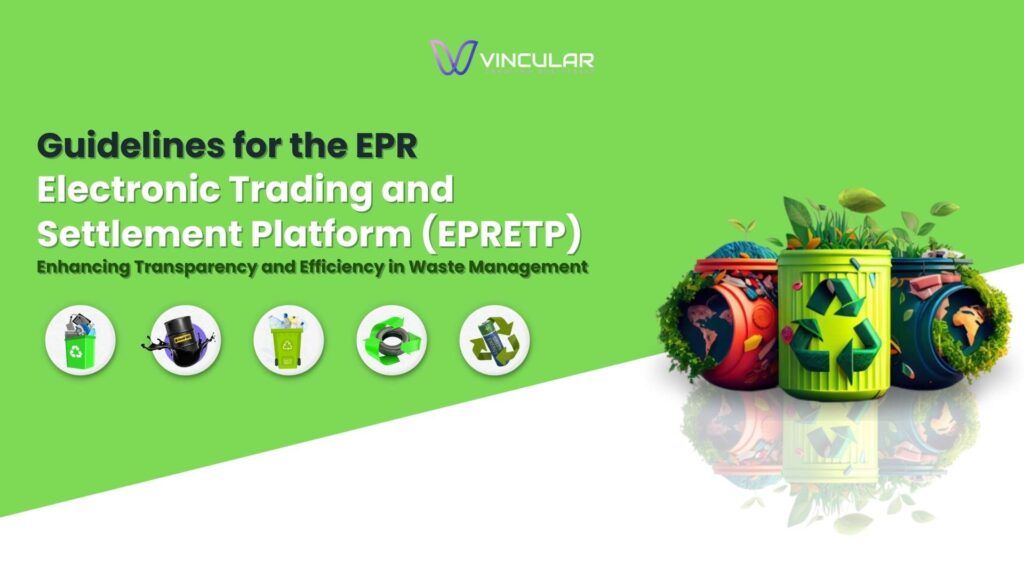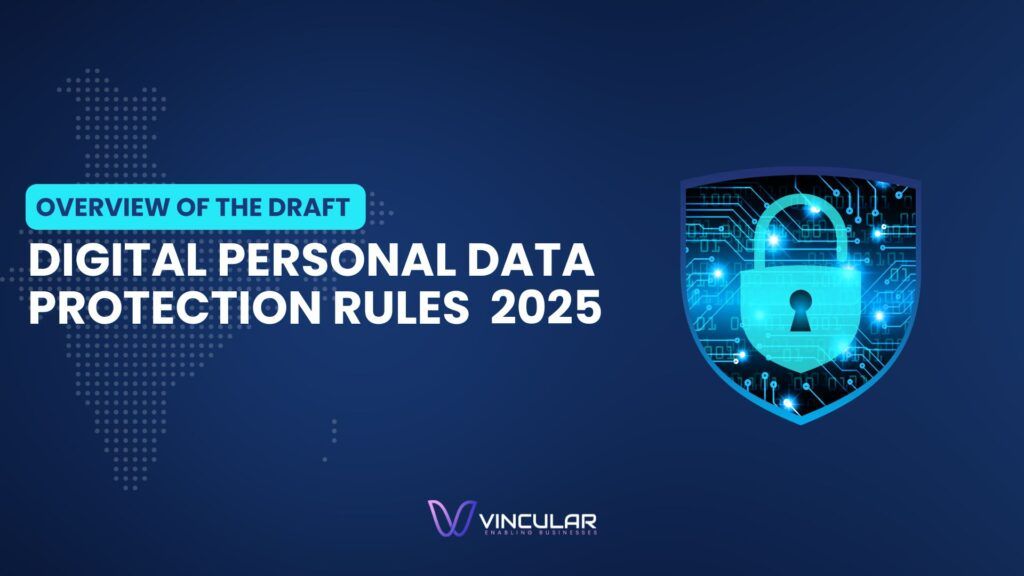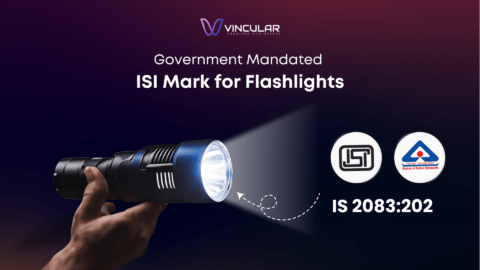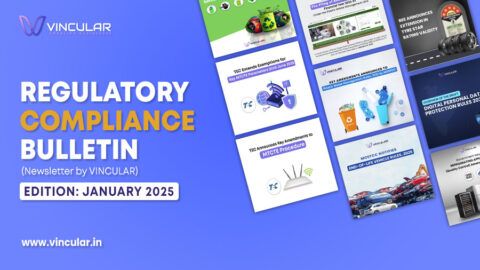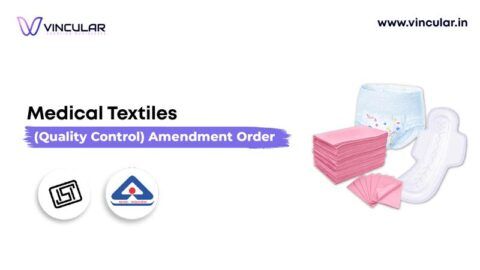TEC
Amendment of clauses in MTCTE Procedure
TEC has recently announced several amendments and modifications in the official MTCTE procedure. The same has been outlined below:
The MTCTE Procedure Clause 2.1(iii) previously stated:
“Associated model means the model of a telecom equipment formed by using chassis/ motherboard and cards/ access ports of another tested and certified main model having largest configuration.”
The updated Clause 2.1(iii) now reads:
“Associated Model” means the model of telecom equipment having identical software but is formed by using chassis/ motherboard and cards/ access ports of another tested and certified main model having the largest configuration.”
Similarly, the MTCTE Procedure Clause 2.1(xiv) previously stated:
‘Model’ means a product/ equipment bearing a unique model number assigned to the equipment. An equipment, that is different in either hardware design/ software version, shall be treated as a different model.
The updated Clause 2.1(xiv) now reads:
”Model” means a particular hardware/software design or version of a product/equipment bearing a unique model number assigned to the equipment. Equipment, that is different in either of hardware/software/design/ model/version, shall be treated as a different model.
Official Notification from the regulator can be accessed Amendment of clauses in MTCTE Procedure
TEC Extends the Exemption on Various Parameters/Interfaces of ERs under MTCTE
TEC has extended the date of exempted test parameters and their standards up to the 30th of June 2025. The parameters are as follows:
| S. No. | Product /ER
Variant |
Parameters/Interfaces Name (as per ER) | Remarks |
| 1. | Mobile Radio
Trunking System |
Frequency Band for
MRTS |
Exempted for
– ETSI EN 300 390, ETSI EN 300 296, ETSI EN 300 341 & ETSI EN 302 561 |
| Conformance to standards
for MRTS |
|||
| Max RF Power Output for
MRTS Base Stn |
|||
| 2. | Repeater for
Cellular Network |
GSM Repeater Station
Operating Frequency |
Exempted |
| GSM Repeater Station
Parameters |
|||
| WCDMA Repeater Station
Parameters |
|||
| WCDMA Repeater Station
Operating Frequency |
|||
| LTE Repeater Station
Operating Frequency |
|||
| LTE Repeater Station
Parameter |
|||
| 3. | Precision Timing
Protocol Grand Master Equipment |
Max Peak Voltage for 10
MHz Interface |
Exempted |
| Min Peak Voltage for 10
MHz Interface |
|||
| Profile for Frequency
synchronisation |
|||
| Profile for time and phase
synchronisation with full timing support |
|||
| Profile for time and phase
synchronisation with partial timing support |
|||
| Pulse Shape for 10 MHz
Interface |
|||
| Pulse Width for 1 PPS
Interface |
|||
| Rise Time for 1 PPS
Interface |
|||
| 4. | VHF UHF Radio System Equipment | Frequency for VHF or
UHF equipment |
Exempted for –
ETSI EN 300 390, ETSI EN 300 296, ETSI EN 300 341, ETSI EN 300 698, ETSI EN 300 783, ETSI EN 300 720, ETSI EN 301 925, ETSI EN 301 178. |
| Conformance to standards
for VHF or UHF Radio Systems |
|||
| Max Transmit Power for
VHF or UHF HH Stn |
|||
| 5. | Radio Broadcast
Receiver |
Frequency of operation for
Radio Broadcast Receiver |
Exempted |
| 6. | ADSLx | Bit Rate for ADSLx Int | |
| Insulation Test for ADSL
Int. |
|||
| Line Port impedance for
ADSLx Int |
|||
| Loop resistance for
ADSLx |
|||
| PSD for ADSLx Int | |||
| Transmitted Power At
ATU-C for ADSLx Int |
|||
| 7. | VDSLx | Bit Rate for VDSLx Int | Exempted |
| Insulation Test for 2 wires
Int |
|||
| Line Port impedance for
VDSLx Int |
|||
| Loop resistance for
VDSLx |
|||
| Profiles for VDSLx | |||
| PSD for VDSLx Int | |||
| Return Loss for VDSLx | |||
| Transmitted Power At
ATU-C for VDSLx Int |
|||
| 8. | Optical Fibre
(Single Mode) |
Mechanical
Characteristics Proof test for minimum strain level |
Exempted |
| Material Properties- Fiber
Materials- The substances of which the fibres are made |
|||
| 9. | Optical Fibre Cable | Lightning Test | Exempted |
| DC Resistance | |||
| Short Circuit Test | |||
| Lightning Arc Test | |||
| Flame Spread- Bunched
cable |
|||
| Smoke Test / Smoke
Density Test |
|||
| Acid gas (Toxicity) (Test
on toxic gases evolved during combustion of materials from cables |
|||
| Flame retardant | |||
| Electrical Characteristics –
Power Feeding Wires |
|||
| Transfer impedance and
Coupling attenuation |
|||
| Requirements for fire
performance of Optical/metallic hybrid cables should meet fire safety regulations |
|||
| 10. | HF Radio System | Conformance to standards
for HF Radio Systems |
Exempted for
ETSI EN 303 402 Page 3 of 4 FCC CFR47 Part 90 |
| Frequency for HF
equipment |
|||
| Max Transmit Power for
HF Base Stn |
|||
| SAR for HF equipment | Exempted | ||
| 11. | GSO VSAT/GSO User Terminal | Conformance to standards
for Satellite |
Exempted |
| Transmit Power – Satellite
Equipment |
|||
| 12. | NGSO Terminal
NGSO Integrated Gateway |
Conformance to standards
for Satellite-NGSO |
Exempted |
| 13. | All applicable
ERs notified under MTCTE |
ER Interfaces
i) 5G NR- FRI and FR2 interworking with other Radios ii) 5G NR (FR2) |
Exempted |
| NaviC | Exempted | ||
| Insulation Resistance for
SHDSL Int |
Exempted | ||
| LCL for SHDSL Interface | Exempted | ||
| PSD for SHDSL Int | Exempted | ||
| Return Loss for SHDSL | Exempted | ||
| Throughput for SHDSL
Interface |
Exempted | ||
| Transmitted Power for
SHDSL Int |
Exempted |
Access the official notification from here: Exemption on Various Parameters
Update on ILAC Test Reports Acceptance under MTCTE
The Telecom Engineering Centre (TEC) has announced that, until June 30, 2025, test reports accredited by the International Laboratory Accreditation Cooperation (ILAC) from non-border-sharing countries will be accepted for the technical parameters of specified products under the MTCTE.
- Base Station for Cellular Network (up to 4G)
- SIM
- VHF UHF Radio Equipment System
- Base Station for Cellular Network for 5G
- E-band Fixed Radio Relay Systems
Remember, reports should not be older than two years from the date of submission on the MTCTE portal.
Access the official notification from here: ILAC Test Reports
Exemption and Exceptions for a Few Test Parameters under MTCTE!
The Telecom Engineering Centre (TEC) has recently issued an update regarding the acceptance of Exemption/Test Reports/Self-Declaration of Conformity for certain ER parameters of the PON Family of Broadband Equipment under MTCTE.
Key points include:
- Protocol Test for any PON Interface – The exemption from submitting test reports is valid till 30.06.2025.
- Automatic Laser Shut-Down (ALS)/Automatic Power Shut-Down (APSD) – Self-Declaration of Conformity by the applicant/OEM is acceptable till 30.06.2025.
- Interoperability Test for GPON (ITU-T G.984.x) – Applicants may upload test reports/results conducted in any NABL-accredited lab or OEM’s in-house lab. This relaxation is valid till 30.06.2025.
This update aims to facilitate smoother processes and ensure continued compliance for the PON Family of Broadband Equipment.
Access the official notification from here: Self-Declaration of Conformity for certain ER parameters
WASTE MANAGEMENT
Draft Liquid Waste Management Rules, 2024
The Ministry of Environment, Forest and Climate Change (MoEFCC) has issued new rules for liquid waste management on October 7, 2024, which shall come into force from 01 October 2025.
The Draft Liquid Waste Management Rules, 2024, are meant to create an environmentally sound framework for managing liquid waste across India. The Rules will focus on:
- Wastewater
- Sludge produced during wastewater treatment and faecal sludge
- Reuse, use, and disposal of treated wastewater and sludge/faecal sludge.
These draft rules highlight the key responsibilities of all the stakeholder (chapter-wise) which applies to all urban and rural bodies, public authorities, and all entities involved in the generation and management of wastewater, sludge, and faecal sludge. This includes industrial areas, SEZs, airports, ports, railway stations, and more encompassing both public and private sectors.
Key Objectives
- Entities with water consumption over 5000 litres per day or those generating more than 10 kg/day of Biological Oxygen Demand (BOD) are required to register via a centralized online portal.
- As per the draft rules by 2030, any industries generating more than 5000 litres per day of liquid waste shall reuse at least 50% of treated water and the treated water can be used for irrigation, cooling, and other purposes which will help reduce the demand for fresh water.
Access the official notification from here: Liquid Waste Management Rule
The final rules, expected soon, will give more clarity on exemptions and other details.
Guideline for Extended Producer Responsibility (EPR) Electronic Trading Platform (ETP)
The guideline for the Extended Producer Responsibility (EPR) Electronic Trading Platform (ETP) has been introduced by the Ministry of Environment, Forest, and Climate Change (MoEF&CC) to enhance the transparency and efficiency of trading EPR certificates for waste management.
EPR ETP is to focus on sustainability by allowing companies to trade EPR certificates. Now Producers, Importers, and Brand owners can fulfil their recycling obligations regarding E-Waste, Battery, Plastic, Tyre Waste and Used oil Management through this secure and transparent platform.
Key Features:
- Direct Trading: It ensures direct business between obligated entities (producers, recyclers, and processors of waste).
- Transparency & Fair Pricing: Market-based pricing in real time based on supply and demand.
- Secure Transactions. The platform protects financial integrity with standards set out by CPCB.
- Regulated by CPCB: The platform will be managed by an Electronic Trading Platform (ETP) Operator, fully regulated by the Central Pollution Control Board (CPCB) with Third-Party Auditing to ensure accuracy and fairness.
Financial Criteria for ETP Operator:
- Turnover: ₹50 crores/year (last 3 years).
- Net worth: ₹10 crores (average of last 3 years).
Why this Matters:
This platform will revolutionize waste management by:
- Enabling transparent EPR certificate trading.
- Strengthen Robust compliance and regulatory mechanisms.
- Promoting a circular economy through material recovery and reuse.
Access the official notification from here: Extended Producer Responsibility (EPR) Electronic Trading Platform (ETP)
Important Update on Environment Protection (End-of-Life Vehicles) Rules, 2025

The Ministry of Environment, Forest, and Climate Change has notified the Environment Protection (End-of-Life Vehicles) Rules, 2025. The rules, will come into effect from April 1, 2025, and aim to promote waste reduction, material reuse, disposal, recycling, and management of End-of-Life (EOL) vehicles.
Key Highlights:
- Responsibilities of Key Stakeholders Producers need to register with the Central Pollution Control Board (CPCB) online portal and fulfil EPR obligations. Bulk Consumers (Organisations Owning 100+ Vehicles) must register with the State Pollution Control Board and file annual returns on vehicles owned or scrapped. The Collection Centre plays an important role as they are responsible for collecting End-of-Life vehicles and forwarding them to authorized RVSFs.
- Every producer is required to organize awareness campaigns to encourage the safe disposal of End-of-Life vehicles at the Registered Vehicle Scrapping Facility or the designated Collection Centre.
- A centralized online portal will manage the Registration, data submission, Filing of returns, and Exchange of EPR certificates.
- Key Targets & Compliance: Stell recycling starts at 8 % for 2025-26 & reaches 18% by 2039-40. Producers must fulfil EPR targets based on the vehicle category. The portal will track all transactions and facilitate exchanges of EPR certificates.
Access the official notification from here: Environment Protection (End-of-Life Vehicles) Rules, 2025
Extension of Deadline for Filing Quarterly and Annual Returns (FY 2023-24)
The Ministry of Environment, Forest, and Climate Change (MoEFCC) has provided an extension for the filing of quarterly and annual returns for the financial year 2023-24 under the following Waste Management Rules: –
- E-Waste (Management) Rules, 2022
- Battery Waste Management Rules, 2022
- Tyre Waste (under Hazardous and Other Waste (Management and Transboundary Movement) Amendment Rules, 2022.
The new deadlines for filing the returns are as follows:
- Battery Waste Annual Return (FY 2023-2024): March 31, 2025
- E-Waste Annual Return (FY 2023-2024): January 31, 2025
- Tyre Waste Annual return (FY 2023-24): January 31, 2025.
Companies registered under the Extended Producer Responsibility (EPR) regime for respective Waste Management regulations are advised to take advantage of this extended deadline to ensure compliance and avoid any penalties.
MoEFCC Announced Plastic Waste Management (Amendment) Rules, 2025
On January 23, 2025, the Ministry of Environment, Forest, and Climate Change (MoEFCC) issued a notification marking significant updates to the Plastic Waste Management Rules, 2016 for Marking and Labelling. These rules may be called the Plastic Waste Management (Amendment) Rules, 2025.
Effective Date: From July 1, 2025, producers, importers, or brand owners who are involved in plastic packaging must provide specific information about the packaging.
This information can be shared in one of the following ways:
- By printing a barcode or QR code on the plastic packaging.
- By including the information in a product information brochure that comes with the product.
- By printing a unique number on the plastic packaging.
These producers, importers, or brand owners need to inform the Central Pollution Control Board (CPCB) when they are using one of the methods mentioned (barcode/QR code/brochure/unique number) to share the information.
The CPCB will then create a list of all these companies and will publish it on their website, updating it every quarter. Additionally, Non-compliant Stakeholders can face penalties under the Environment Protection Act 1986.
Access the official notification from: Plastic Waste Management (Amendment) Rules
Important Update for PIBOs covered under Plastic Waste Management Compliance
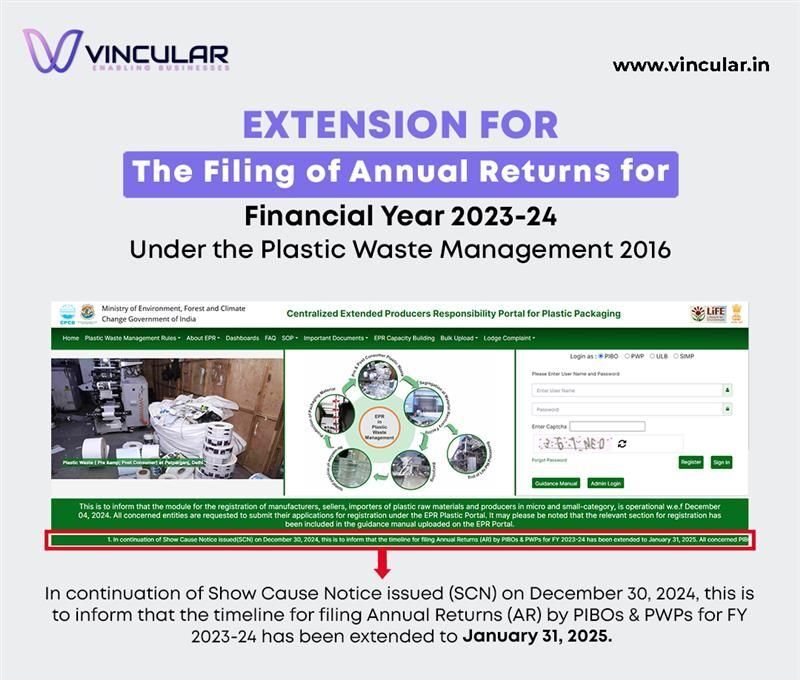
Central Pollution Control Board has provided an extension for the filing of annual returns for the financial year 2023-24 under Plastic Waste Management 2016. The new deadline is now January 31, 2025.
In continuation of the Show Cause Notice issued (SCN) on December 30, 2024, all EPR Stakeholders now have time until January 31, 2025, to fulfil their EPR obligations and submit the annual return for plastic packaging on the centralized portal for FY 2023-24.
Further, to avoid any environmental compensation please fulfil your obligation before the due date.
BIS-CRS
Key Updates on the Meeting held on January 9, 2025, Between the Ministry and the Stakeholders on the Implementation of Essential Security Requirements for CCTVs
A meeting was held under the Chairmanship of Sh. Sushil Pal, Joint Secretary (IPHW), Ministry of Electronics and Information Technology (MeitY) on 09.01.2025 to review the status of implementation of the notification of Essential requirements for security of CCTVs notified in CRO 2021.
The key points covered in the meeting are listed below.
- It was advised to STQC to provide visibility to the applicant in terms of the capacity of the lab for handling jobs so that the applicants can select a suitable lab based on its load.
- Ministry clarified regarding the use of test reports for PPO and ER-01 that “only the applicants which had applied for testing under PPO before the 14 STQC labs were empanelled under BIS for CRO, only for those companies, the decision was taken that the same test reports can be utilised for registration under CRO on the BIS portal”
- Furthermore, in response to the request of manufacturers and applicants, BIS will discuss and make clear on extending the deadline for the PPO report to be used for the ER from November 25, 2024, to December 31, 2024.
- New applicants are suggested to proceed with the ER-01 first and then can use the same test report for the PPO purpose.
- If the manufacturers are willing to apply for PPO, they may submit the same test report to STQC separately for issuing a PPO certification after necessary validation by STQC within a week time.
- BIS will also issue an SOP for uploading test reports multiple times to resolve the issue of different series guidelines for safety and security ERs for different models. ER guidelines are mainly based on the same SoC, firmware and PCBA. However, the series guidelines on IS 13252 (safety standard) are based on power supplies, housing etc.
The Official notification can be accessed with the link: Essential requirements for security of CCTV
ISI
Medical Textiles (Quality Control) Amendment Order
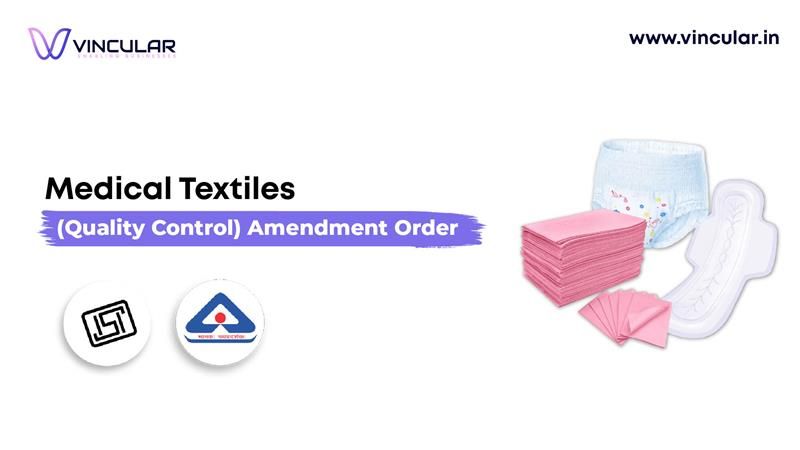
The Ministry of Textiles introduced the Medical Textiles (Quality Control) Amendment Order 2025, on 1st January 2025 which came into force on the date of its publication in the Official Gazette.
This order requires that Medical Textiles must comply with their respective Indian Standards. The products must display the Standard Mark under a license from the Bureau of Indian Standards, under Scheme-I of Schedule-II of the Bureau of Indian Standards (Conformity Assessment) Regulations, 2018.
The following products are covered under the Medical Textiles (Quality Control) Amendment Order-
| Sr. No. | Product | Indian Standard |
| 1 | Sanitary napkins | IS 5405: 2019 |
| 2 | Disposable baby diaper | IS 17509: 2021 |
| 3 | Reusable Sanitary pad/ Sanitary Napkin/ Period Panties | IS 17514: 2021 |
| 4 | Shoe covers | IS 17349: 2020 |
| 5 | Dental Bib or Napkins | IS 17354: 2020 |
| 6 | Bed sheet and Pillow Cover | IS 17630: 2021 |
Medical Textiles (Quality Control) Amendment Order, 2025: Notice for BIS-Certified and Applicant Manufacturers
Manufacturers certified by the Bureau of Indian Standards (BIS) or those who have applied for certification for products listed under Schedule A of the Principal Order are allowed to sell or display their old stock products without the BIS mark under certain conditions.
Conditions:
- The products must have been manufactured or imported before the implementation timeline of this Order.
- A declaration must be made as per sub-section (4) of Section 18 of the BIS Act, 2016 (11 of 2016).
Important Deadline:
- Declared old stock can be sold or displayed until 30th June 2025.
Manufacturers are advised to ensure compliance by declaring their eligible stock within the specified timeframe.
Timeline for Implementation –
- For Large and Medium Enterprises: 1st January 2025.
- For Small and Micro Enterprises: 1st April 2025.
The official notification from RBI can be referred to the link: Medical Textiles (Quality Control) Amendment Order
BIS Quality Control Order for Electrical Appliances for Domestic Water Heating
The Ministry of Commerce and Industry has issued the Electrical Appliances for Domestic Water Heating (Quality Control) Order, 2025, which came into effect on January 16, 2025, the day it was published in the Official Gazette.
Key Highlights of the Order:
-
All covered products must comply with the respective Indian Standard and bear the Standard Mark (BIS Certification) under Scheme-1 of the BIS (Conformity Assessment) Regulations, 2018.
-
The order does not apply to products manufactured in India exclusively for export.
Products Covered Under This Order:
| Sr. No. | Indian Standard | Title of Indian Standard |
| 1 | IS 302(Part 2/Sec 21): 2018 | Appliances for Stationary storage type electric water heaters |
| 2 | IS 302 (Part 2/Sec 35): 2017 | Appliances for electric instantaneous water heaters |
| 3 | IS 368:2014 | Electric Immersion Water Heaters |
| 4 | IS 2082:2018 | Stationary storage type electric water heaters |
| 5 | IS 17150:2019 | Mini domestic water heater for use with piped natural gas (PNG) |
Date of Implementation:
- For general: 1st March 2025
- For small enterprises: 1st June 2025
- For micro-enterprises: 1st September 2025
The official notification can be accessed here: Electrical Appliances for Domestic Water Heating
Refrigerating Appliances (Quality Control) Amendment Order
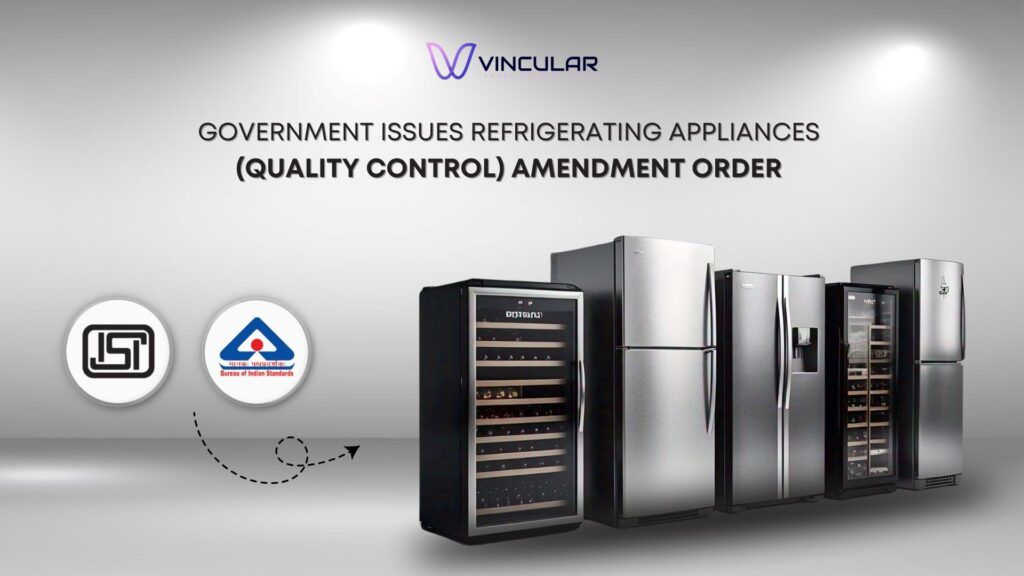
The Ministry of Commerce and Industry has introduced the Refrigerating Appliances (Quality Control) Amendment Order, 2025, which came into effect on January 16, 2025, upon its publication in the Official Gazette
Key Requirement:
All refrigerating appliances must comply with their respective Indian Standards and bear the Standard Mark (BIS Certification) under Scheme-I of Schedule II of the BIS (Conformity Assessment) Regulations, 2018.
Key Amendments in the Order:
Exemption for Imported Components by Certified Manufacturers:
- Certified manufacturers (or those applying for BIS certification) can import components for export purposes.
- A self-declaration and undertaking are required, to ensure these components are not sold in the domestic market.
- Records must be maintained for audits.
Exemption for Research & Development (R&D) Purposes:
- Manufacturers can import up to 200 units annually for R&D.
- These units must not be sold commercially and must be scrapped after use.
- Year-wise records must be maintained.
These changes aim to support exports and innovation while ensuring compliance.
The official notification can be accessed here: Refrigerating Appliances (Quality Control) Amendment Order
Government Notifies Flashlight (Quality Control) Order, 2025
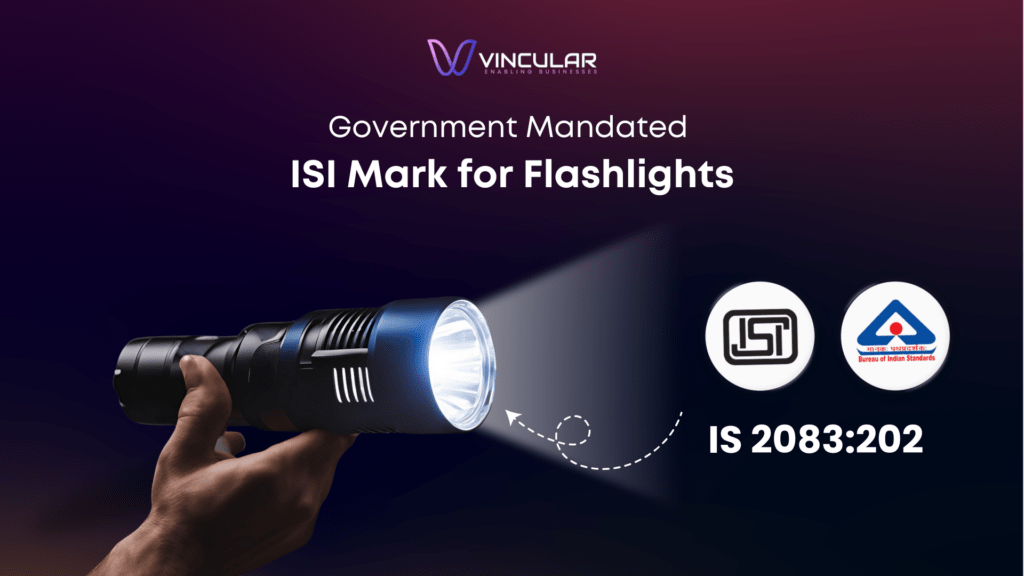
The Ministry of Commerce and Industry has issued the Flashlight (Quality Control) Order, 2025, which came into effect on January 21, 2025, upon its publication in the Official Gazette.
Key Requirements:
- All flashlights must comply with Indian Standard IS 2083:2024
- Products must display the Standard Mark (BIS Certification) under Scheme-I of Schedule-II of the BIS (Conformity Assessment) Regulations, 2018.
- The order does not apply to flashlights manufactured exclusively for export.
Exemptions for Flashlight Manufacturers (R&D Use Only):
🔹 Manufacturers can import up to 50 units per year for Research & Development (R&D).
🔹 Imported units must not be sold commercially and must be scrapped after use.
🔹 Year-wise records must be maintained and made available to the Central Government upon request.
This exemption aims to support innovation while ensuring compliance with quality standards.
Implementation Timeline:
- For General Manufacturers: July 21, 2025
- For Small Enterprises: October 21, 2025
- For Micro Enterprises: January 21, 2026
The official notification can be accessed here: Flashlight (Quality Control) Order
DATA COMPLIANCE
Introducing Draft DPDP Rules 2025
On January 3, 2025, the Ministry of Electronics and Information Technology (MeitY) released the draft Digital Personal Data Protection Rules 2025, initiating a 45-day public consultation period, where stakeholders can submit their objections or suggestions until February 18, 2025.
This consultation phase is vital, as it provides an opportunity for stakeholders to contribute to refining the final version of the Digital Personal Data Protection Act (DPDPA) 2023 rules, ensuring they are practical and effective for real-world implementation.
The implementation timeline indicates that the rules will come into force upon publication, with specific provisions—namely rules 3, 15, 21, and 22—becoming effective at a later stage. After the consultation period, MeitY will finalize the rules, addressing the feedback received, and paving the way for the full operationalization of the DPDPA.
For more detailed information, refer to the official notification: Draft Digital Personal Data Protection Rules, 2025
VOICE COMPLIANCE
TRAI and RBI Initiatives to Combat Pesky Calls
The Telecom Regulatory Authority of India (TRAI) is actively implementing measures to curb pesky calls and messages, ensuring better protection for end customers from spam and scams. To support these initiatives, the Reserve Bank of India (RBI) issued a directive on January 17, 2025, to all financial entities, including NBFCs and other institutions, highlighting the necessity of aligning their operations with TRAI’s regulations.
As per the RBI directive, all RBI-regulated entities must take proactive measures to align with TRAI’s guidelines and ensure regulatory compliance. These measures are designed to enhance customer protection and mitigate risks associated with spam and scam calls.
Additionally, the directive mandates financial entities use the 140 numbering series for promotional calls to enhance identification and accountability. Furthermore, the adoption of the 160 numbering series for service/transactional voice calls will be required once it becomes operational, further strengthening compliance frameworks.
The official notification from RBI can be referred to the link: Curb Pesky Calls and Messages
Bureau of Energy Efficiency
Extension of Star Rating Validity for Tyres
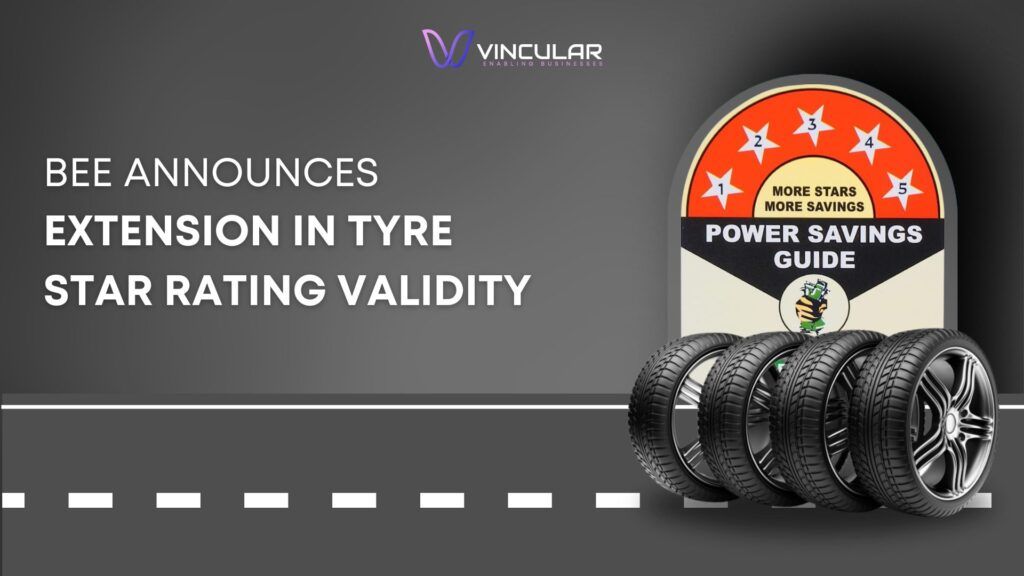
The Bureau of Energy Efficiency (BEE) has extended the validity of the existing star rating table of tyres. The new validity periods are as follows:
| Product | New Validity |
| Tyres | 1st January 2022 to 30th June 2025 |
To keep your model’s registration with BEE active, the respective product category permittee is required to adhere to the below process:
| Process | To be Completed by |
| Model Continuation Process for tyres | 28th February 2025 |
The Official notification can be accessed with the link: Star Rating Table of Tyres
Stay Updated, Stay Compliant – Subscribe to our Newsletter Now!
Whether it’s important compliance notifications or changes in policies and regulations, we’ve got it covered.
Subscribe to our Free Monthly Newsletter or watch our Latest News & Updates Space for daily updates to stay ahead with the latest regulations and notifications without spending a dime!

